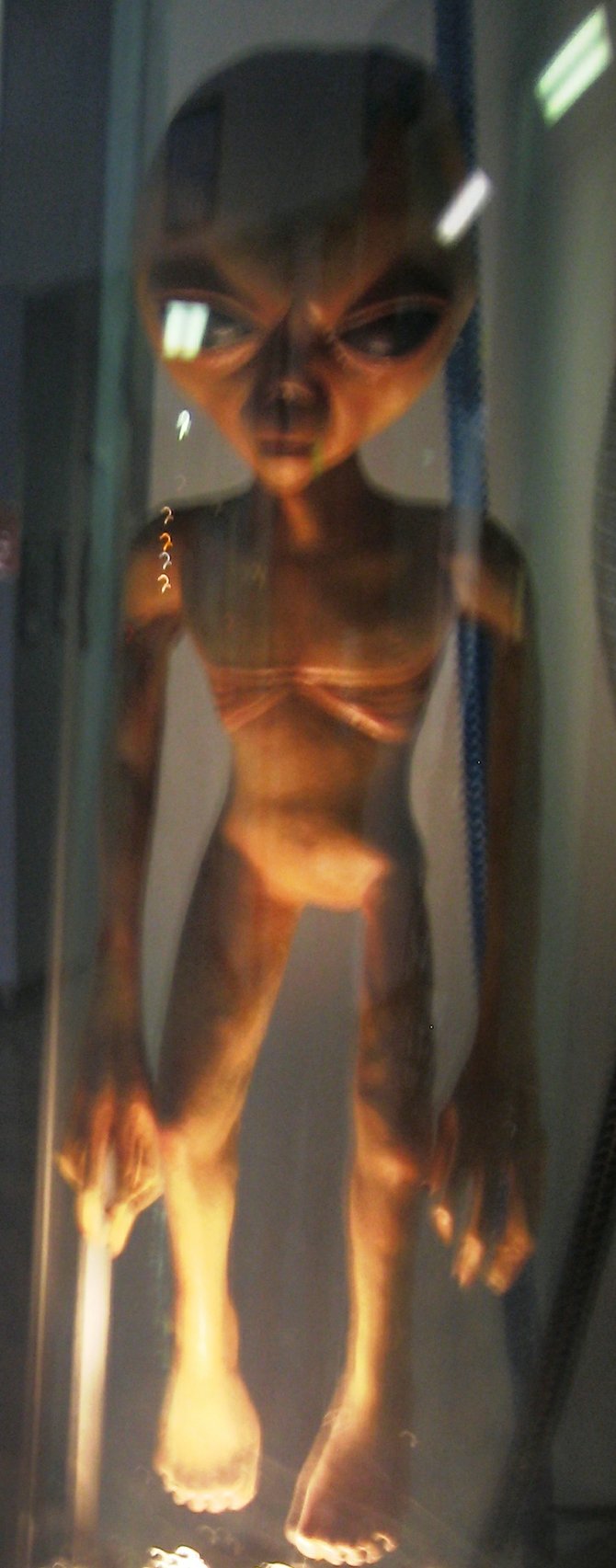 Facebook
Facebook
 X
X
 Instagram
Instagram
 TikTok
TikTok
 Youtube
Youtube

Located in the Pecos Valley, Roswell grew up around large cattle ranches on land previously occupied by Mescalero Apaches. From the development of Fort Stanton in 1855 to the closure of the Walker Air Force Base – home to the world’s longest runways in the ‘70s – the town had always had a strong military presence.
Fort Stanton was first founded as a frontier outpost to protect settlers from Indian raids. But it owes its fame to having later stationed the infamous Buffalo Soldiers.
Today, the economic well-being of the town no longer depends on either ranchers or the military, but is derived mainly from the thousands of tourists who come to learn about the 1947 Roswell Incident. What began as a solo sighting of an alleged alien spaceship crash is now a multi-million dollar tourism attraction. It is not the crash to which the “Incident” refers, however, but rather to the subsequent cover-up of the recovery of the craft and occupants.
The military officially maintained and still maintains that the hoopla resulted from the crash of an experimental, and classified, high-altitude surveillance balloon. Thirty years later, in 1978, retired personnel that had worked at the supposed crash site began contradicting the official claim, effectively resurrecting the famous, controversial UFO mystery just in time to revitalize the depressed town that only a few years before had lost half its population with the closing of the Walker Air Force base.
Driving the main drag, there is visible evidence of the success of this marketing scheme. With names like “Not of This World Coffee Shop,” replica flying disks mounted on roofs and pillars such as the one at the local McDonald’s, and giant green plastic inflatable aliens looming in almost every shop window, it’s easy to doubt and even mock the verity of the original incident for which Roswell is best known.
Not surprisingly, I had to practically drag my friend through the doors of the UFO Museum and Research Center, whose mission is to provide an educational resource pertaining to UFO phenomena.
If not grudgingly, certainly with his tongue firmly planted in cheek, he accompanied me as we paid for our tickets. As he made his way from one exhibit to the next, he became less and less cynical and more and more absorbed in the mystery that had captured my interest as a wee lass.
Exhibits included information on the Incident, of course, as well as on crop circles, other UFO sightings, the mysteries of Area 51 (a military airfield in Nevada where experimental aircraft and weapons systems are tested), and abductions.


Located in the Pecos Valley, Roswell grew up around large cattle ranches on land previously occupied by Mescalero Apaches. From the development of Fort Stanton in 1855 to the closure of the Walker Air Force Base – home to the world’s longest runways in the ‘70s – the town had always had a strong military presence.
Fort Stanton was first founded as a frontier outpost to protect settlers from Indian raids. But it owes its fame to having later stationed the infamous Buffalo Soldiers.
Today, the economic well-being of the town no longer depends on either ranchers or the military, but is derived mainly from the thousands of tourists who come to learn about the 1947 Roswell Incident. What began as a solo sighting of an alleged alien spaceship crash is now a multi-million dollar tourism attraction. It is not the crash to which the “Incident” refers, however, but rather to the subsequent cover-up of the recovery of the craft and occupants.
The military officially maintained and still maintains that the hoopla resulted from the crash of an experimental, and classified, high-altitude surveillance balloon. Thirty years later, in 1978, retired personnel that had worked at the supposed crash site began contradicting the official claim, effectively resurrecting the famous, controversial UFO mystery just in time to revitalize the depressed town that only a few years before had lost half its population with the closing of the Walker Air Force base.
Driving the main drag, there is visible evidence of the success of this marketing scheme. With names like “Not of This World Coffee Shop,” replica flying disks mounted on roofs and pillars such as the one at the local McDonald’s, and giant green plastic inflatable aliens looming in almost every shop window, it’s easy to doubt and even mock the verity of the original incident for which Roswell is best known.
Not surprisingly, I had to practically drag my friend through the doors of the UFO Museum and Research Center, whose mission is to provide an educational resource pertaining to UFO phenomena.
If not grudgingly, certainly with his tongue firmly planted in cheek, he accompanied me as we paid for our tickets. As he made his way from one exhibit to the next, he became less and less cynical and more and more absorbed in the mystery that had captured my interest as a wee lass.
Exhibits included information on the Incident, of course, as well as on crop circles, other UFO sightings, the mysteries of Area 51 (a military airfield in Nevada where experimental aircraft and weapons systems are tested), and abductions.
Comments